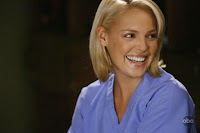One of the best developments in modern medicine is the emergence of smarter, better informed patients. Today, patients have access to more information about health, medicine and wellness than ever before thanks to the Web, the news media and public health initiatives.The timing for this improved education couldn't be better. Doctors today are very busy, but still want to help their patients stay or become healthy. So today's patients, armed with accurate records and information about their own health, are better able to utilize the time they have with their doctor.Just as valuable, patients who are better informed can also help our health care system realize needed improvements in costs and quality of care.While some discussions around health care reform revolve around the roles of doctors, hospitals and insurers, patients also have a central role in helping to transform our health care system. Patient-centered care, an important current initiative, empowers patients to better manage their own health and work with their physicians and a coordinated team of other health care professionals to make informed decisions.Smarter patients are likely to make more effective use of health care services and, therefore, help improve the quality of care and keep costs under control.Here are a few tips on how to become a smarter patient and be more proactive about your own health:
- Keep track of your own health history. Record in a journal or an electronic tool any illness or injury, hospitalization or surgery, allergies, medications or supplements you take; and any illness in your immediate family. This is the type of information primary care doctors, specialists and emergency room doctors routinely ask their patients. When you have your own records you make the task of sharing this information during an appointment much less cumbersome or time consuming, while at the same time ensuring greater accuracy.
- Coordinate with your doctor's recommendations to schedule regular check-ups. Under the new health care law, many insurance plans are providing preventive care options, including annual physicals, at no out-of-pocket cost to you. Routine check-ups are the best way to catch health issues early when treatments have a better rate of success.
- Actively manage your health by knowing what a healthy weight is for you and what your cholesterol, blood pressure and blood sugar levels are. Many employers, health and community organizations sponsor free screenings that you can utilize.
- Ask questions if you don't understand what your doctor has told you. In the past, doctors may have made treatment decisions with little discussion with patients, but we know now from experience that a collaborative approach, which engages patients in their own care, helps produce optimal results.
- When you do have a health problem, discuss treatment options, risks and benefits with your doctor and consider getting a second opinion before making a decision about your care, especially when dealing with serious medical conditions, such as cancer.
- When you research a medical condition, be certain to utilize credible, trustworthy sources with information that is science-based. Many hospitals, medical associations and research institutions host Web sites with accurate, up-to-date information on health and medical topics. Be careful and skeptical, however, of information on Web sites offering products for sale. Their information may not be totally objective. Ask your physician for recommendations on reliable sites.
The more you know about your own health and the more information you are able to share with your doctor, the better your doctor can do his or her job, and the better your decisions will be when you need to make choices among a variety of health care options.
A collaborative approach with your doctor can save time, money and, most of all, your life.
**Martin Kohn, MD is the Associate Director of Healthcare Analytics for IBM Research









